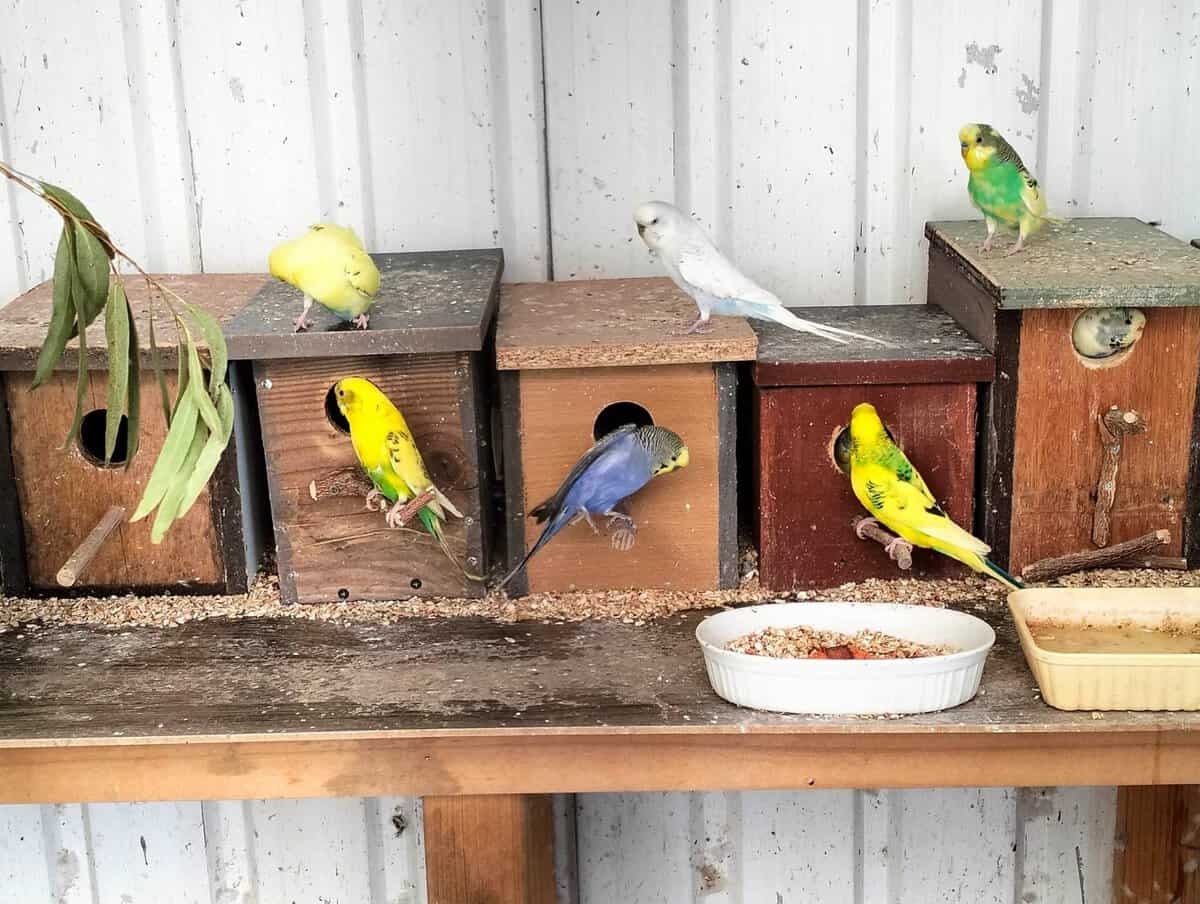The Budgerigar Council of South Australia is pleased to present its guide on budgies as pets. They are also known as budgerigars and parakeets. Pet owners across the world are captivated by the small, chirpy birds. Budgies are loved by many and are ranked just behind cats and dogs. They are intelligent and lovable.
It’s important to understand their temperament and requirements before you welcome them into your home. This guide gives you all the information you require to lead a happy and healthy lifestyle for you and your pet animal companion.

A Social Butterfly in tiny proportions
Budgies are extremely social animals that thrive on friendship. In the wild they live in large, crowded groups, communicating with each other and playing. A single bird can form bonds with its owner if they are given lots of attention. But it is best to have a companion. If you are unable to manage two birds, you can you should spend time with only one bird to avoid loneliness.
Chatterboxes with a Flair for Mimicry
The ability of a pet budgie’s ears to imitate sounds is one of its most endearing characteristics. Budgies can master phrases and words with patience and training. This adds an amazing element of fun to the whistles, chirps and squeaks produced. It is possible for their vocabulary to vary widely. Some budgies might turn into true chatterboxes while others will be content with simple whistles. Their playful voices will put happiness to your face regardless of how skilled they can talk.
Rainbow on Wings
Budgie birds come with a range of colors. From the traditional combination of yellow and light blue to bright shades of green violet and white. Breeders have cultivated a variety of variations over the years, so there’s a chance to find a pet that is a perfect match for your character. The variations in color aren’t only for aesthetic reasons. They could also be used to indicate the gender and age of a bird. This makes them a great conversation starter in pet stores.
In a small space, you can enjoy a spacious space. a small area
While budgies aren’t the biggest creatures, they have plenty of room to move, play and climb. The ideal cage size is 20 inches in length by 12 inches deep and 18 inches tall. But, bigger is always better! Offer perches with different sizes and textures to keep your pet engaged and to rotate their toys often to prevent boredom. It is recommended to let the cage be exposed to sunlight, however do not leave it in bright sunlight for long durations.
A Budgie approved diet
A healthy diet for your budgie is based on pelleted food of premium quality, specifically designed for smaller parrots. They’ll get the nourishment they need to develop. Fresh fruits and vegetables such as chopped carrots (seeds removed) as well as leafy greens and apples can be incorporated into the diet of pellets. Cuttlebones are essential for keeping their beaks tidy and also providing vital minerals. Always ensure they have access to fresh, clean water.
Establishing a connection with your Feathered friend
Taming a budgie takes patience and gentle touch. Be gentle when approaching the cage and speak softly to your bird. To establish trust, you can offer treats such as millet spray through the cage bars. Once your pet is comfortable with you, they can step inside the cage. Be persistent, but not overly aggressive. It could take weeks or even days.
A Lifelong Commitment
If well-cared for, budgies will live between 10 and 12 years old. Consider your way of life and your dedication to the long run before you bring one into your home. Can you offer them daily interactions and comfortable, healthy environment? If so, a pet could be a gratifying and enriching companion, filling your life with fun antics, chirps, and maybe even the occasional human word (or two). Click here for Budgie Bird
The Budgerigar Council of South Australia encourages responsible animal ownership. If you have any concerns or questions about taking care of your pet do not hesitate to speak with an expert avian veterinarian guidance.